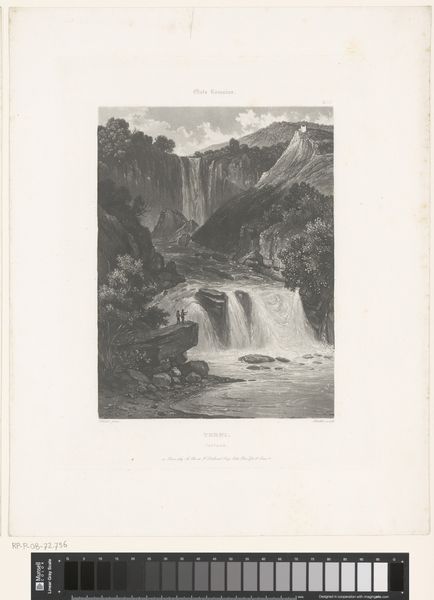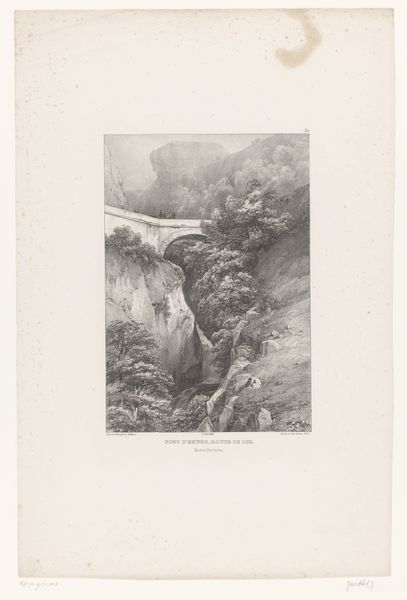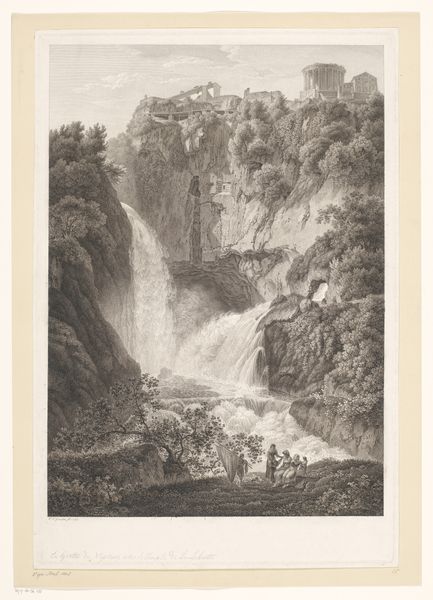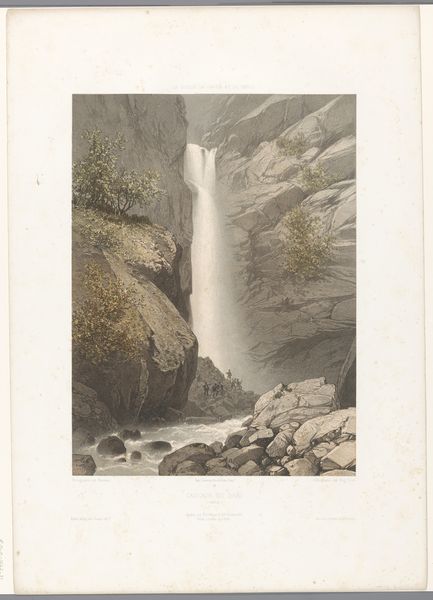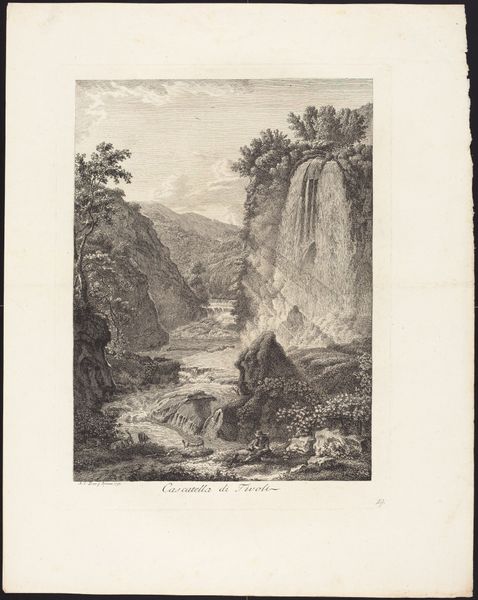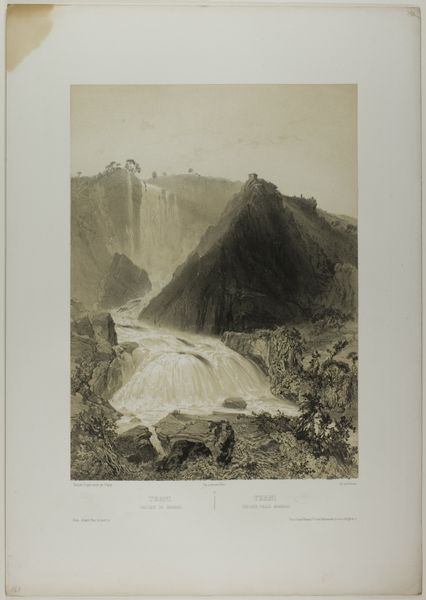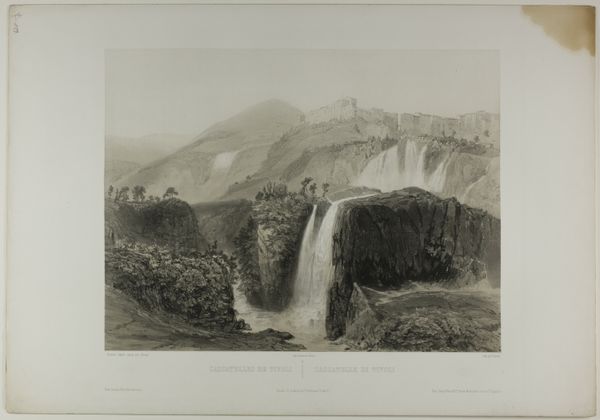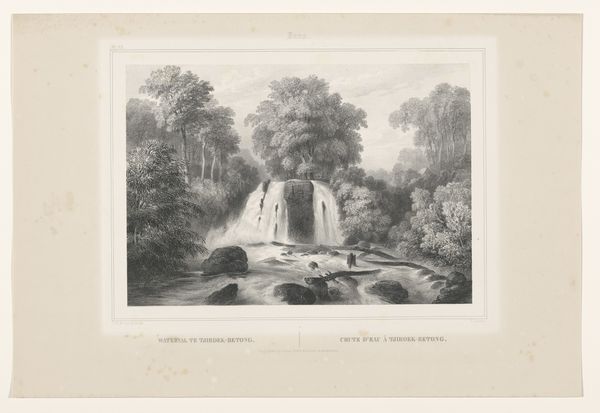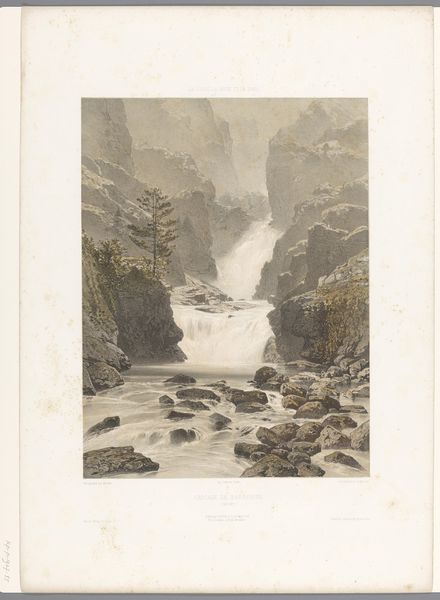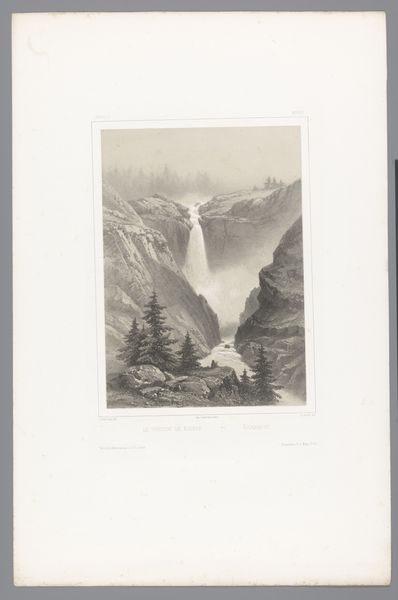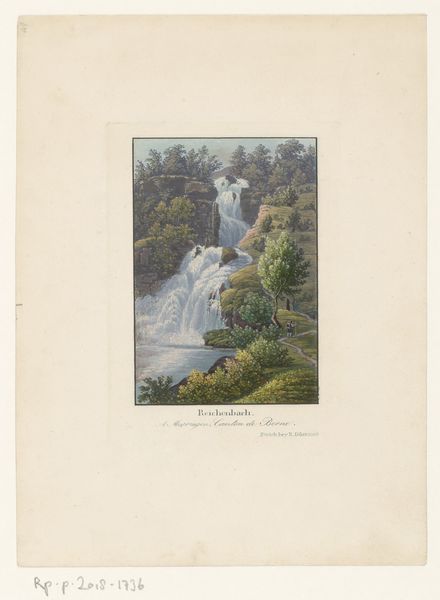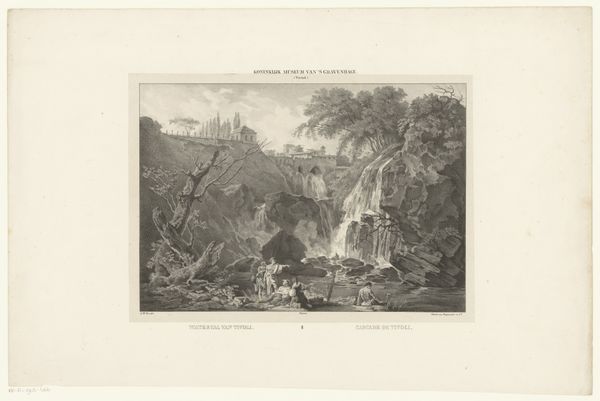
print, engraving
# print
#
old engraving style
#
landscape
#
waterfall
#
romanticism
#
cityscape
#
history-painting
#
engraving
Dimensions: height 284 mm, width 225 mm
Copyright: Rijks Museum: Open Domain
Curator: This is "Watervallen van Tivoli" a print made sometime between 1803 and 1858, credited to Friedrich Salathé. The medium used was engraving. Editor: The way the cascading water contrasts against the solid rock structures, especially that small cluster of buildings teetering above... it creates a potent visual tension, doesn't it? Curator: Absolutely. Views such as these were extremely popular in the early 19th century, specifically through the Romantic movement and its interest in sublime landscapes and their powerful presence. Images like this circulated widely and helped shape a collective cultural imagination. Editor: Water, of course, carries enormous symbolic weight—purity, change, cleansing. The rushing force seems almost to diminish the figures standing at the base. Are they tourists, dwarfed by the scene, seeking spiritual renewal perhaps? Curator: Perhaps both tourists and symbols. The rise of tourism in this era goes hand-in-hand with increased accessibility. Printed images like this played a vital role, sparking interest, establishing popular sights, and dictating to some extent how locations such as Tivoli were subsequently encountered. It's a mediated experience. Editor: Interesting. It's hard to avoid the impression of vulnerability here. These people seek inspiration or merely pause on the journey. Are they observers or intruders, facing the sublime, the uncontainable and ultimately incomprehensible face of nature? Curator: An uncontainable image produced, circulated, consumed… these prints shaped not just the public understanding, but the political implications tied to seeing such monumental beauty. Think about landscape as it pertains to ideas about ownership, and cultural pride, national and religious narratives. Editor: And Salathé, though not as widely known as some contemporaries, effectively taps into the mood. Curator: I agree. Salathé clearly captures a yearning for the sublime, reflecting its complex interplay between awe, terror, and even… exploitation. Editor: That interplay certainly echoes in our world still. Thank you. Curator: My pleasure. These prints reveal so much.
Comments
No comments
Be the first to comment and join the conversation on the ultimate creative platform.
